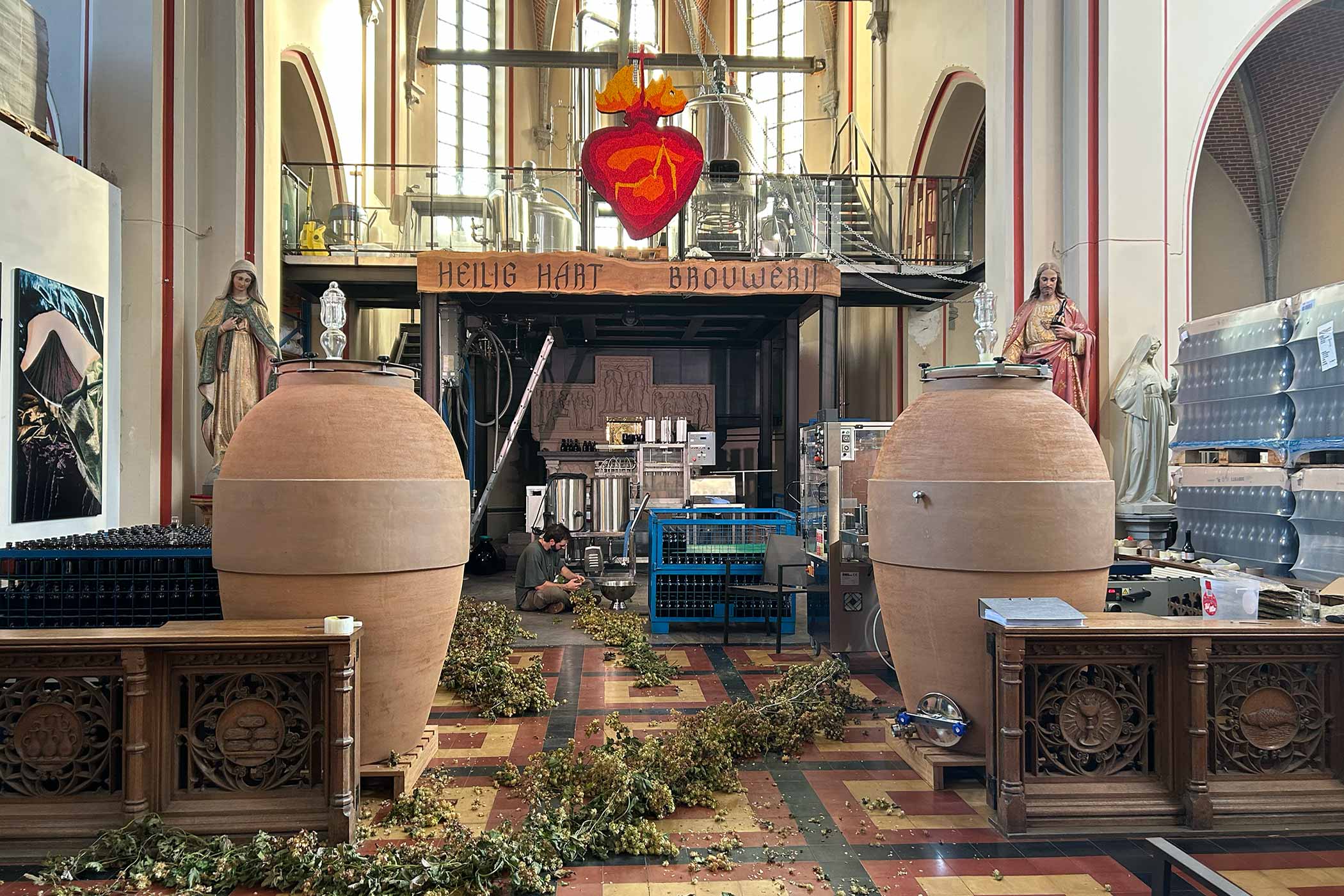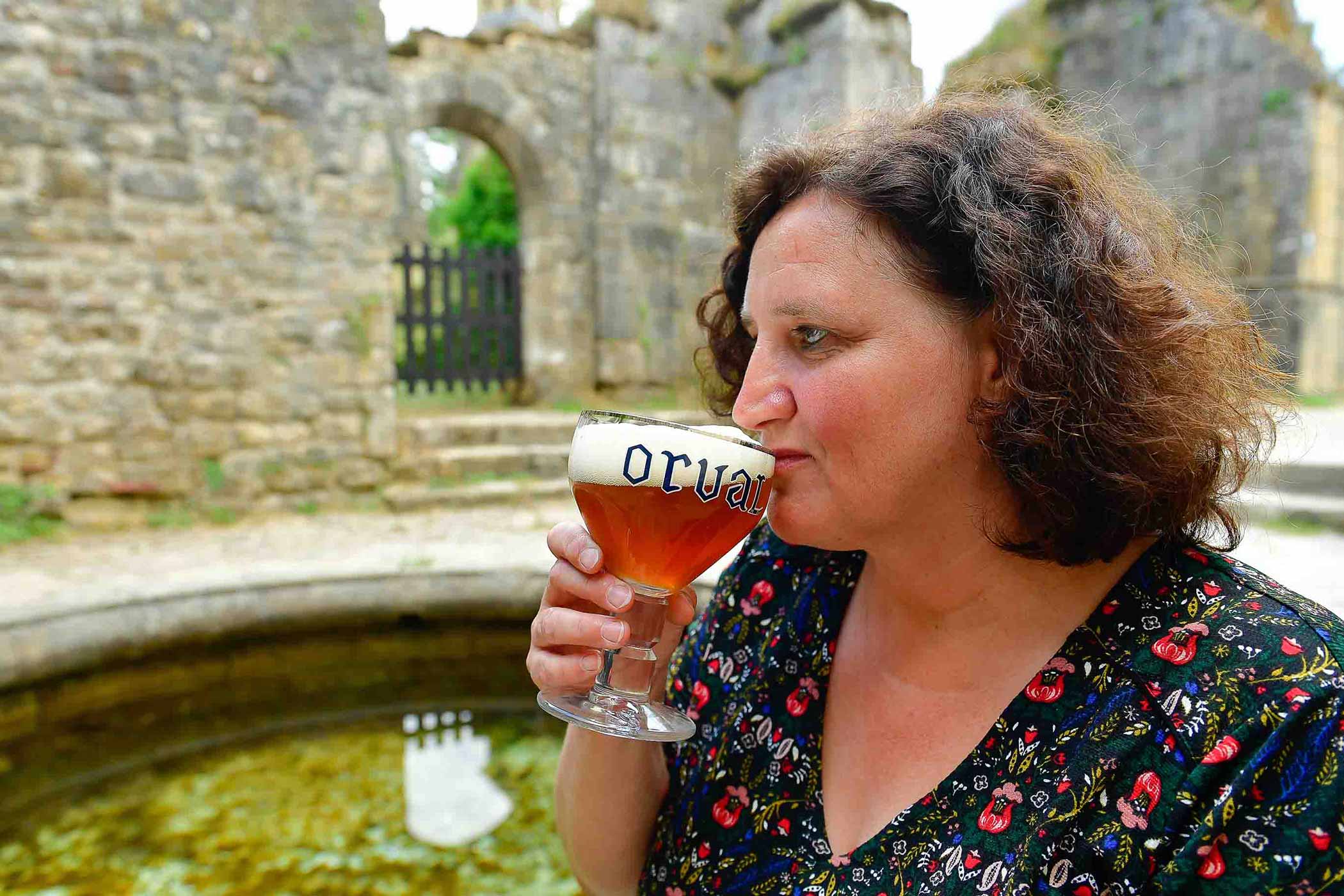Shop
In the Name of the Father, the Son, and the Holy Heilig Hart
Holy water!
Best Breweries and Bars to Visit in Belgium
Brasserie de la Senne: The People’s Brewery of Belgium
Editor’s Note: During the end of September and beginning of October 2023, I had the fantastic opportunity to travel to Belgium on a beer trip hosted by Bruz Beers and Purpose Brewing. For ten days, we bussed around Belgium, visiting countless breweries and pubs, meeting legendary brewmasters, trying beer from centuries-old breweries, and learning about Belgian beer culture. This article is part of a series sharing some incredible stories from my travels.
If you want to join this trip next year, stay tuned to Bruz’s events page here!
The bus pulled into an empty church parking lot on a Wednesday morning. Looking around, we found not a soul in sight. No parishioners… No congregants… No church bells pealing. In fact, the only thing out of place seemed to be a banner strung up across the door—Heilig Hart Brouwerij Bar.
Knocking on the door, we weren’t even sure if anyone was inside.
But a few minutes later, a petit man in a tailored burnt orange cashmere sweater, jeans, and round spectacles opened the door. He exudes a casual elegance. As if he’d effortlessly thrown on perfectly fitting clothes only a couple of minutes before we knocked.
Here at Heilig Hart in Wetteren, Belgium, Founder Hans Dusselier preaches not about Psalm 23 but about fermenting lagers in amphora, a clay or terra cotta vessel that looks like a life-sized urn.
Inside the about 110-plus-year-old house of God, Dusselier praises the microflora and fauna floating around in the air outside.
And inside this abandoned church, Dusselier and his son offer salvation through water, malt, hops, and yeast.
We don’t usually find ourselves at church, but let’s just say Heilig Hart may have converted us.
Buying an Abandoned Church for $300k
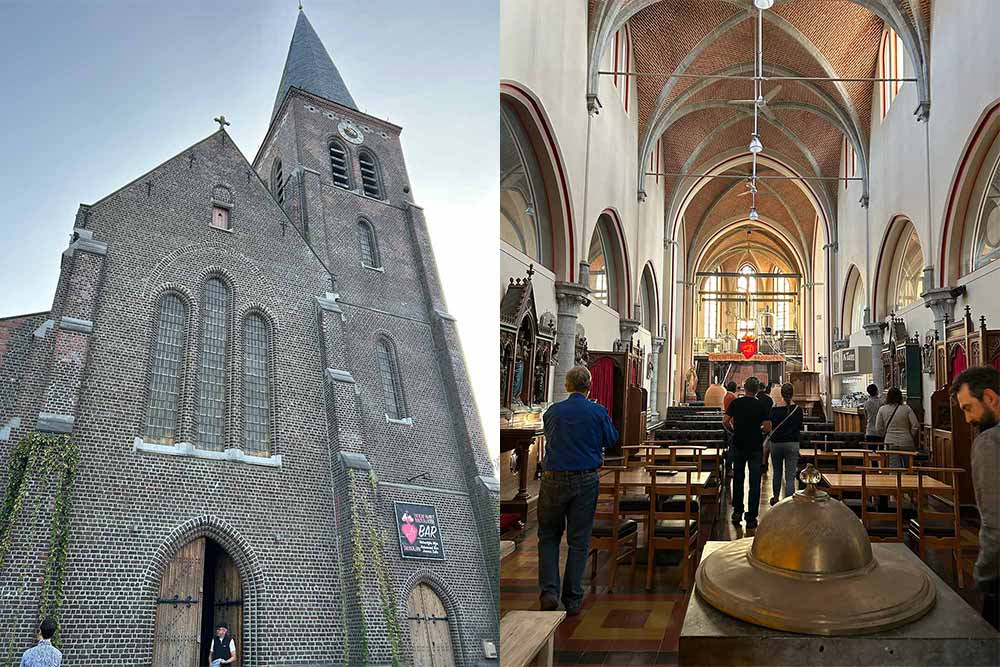
Photography courtesy of Grace Weitz | Hop Culture
A former engineer, Dusselier leads our group of twenty inside into a room of soaring arched ceilings and rust, gold, and black tiled floors.
Only instead of pews we find tables and booths for four.
And while a couple of confessionals still sit comfortably on the sides, waiting with bated breath for sinners to arrive, an entire corner has been excavated, replaced with shelves upon shelves of…
No, not beer.
Something much more holy.
Wine.
Dusselier became a pioneer in natural wine (you know, like Jesus, some might say). Since 2005, he has imported the beverage to Belgium for all to enjoy.
“I wanted to brew some beers in the same philosophy,” says Dusselier as we gaped and gawked at the stone columns and the church pulpit in the middle of the room. “We wanted to brew weird beers, some with spontaneous fermentation. I don’t want to make the same beer all the time.”
But in Flanders, you can only start brewing in an industrial or building area. And to spontaneously ferment and import wine, “You can imagine that the industrial area was not the place for us,” he says.
Looking around, Dusselier quickly realized the building he needed with plenty of space at a reasonable price didn’t exist.
Until he saw a little church in the Netherlands nearby where he lives on the border.
“I said that’s it,” exclaims Dusselier, who quickly phoned bishops in Bruges and Ghent to inquire about churches looking to sell.
The first laughed him off the phone. The latter gave him twenty names within twenty-five kilometers. Dusselier visited thirteen, but, “When I came here, I thought this is the place,” he says.
In 2016, Dusselier bought the abandoned church for $300k, less than what most Americans pay for a house these days.
Before one of the most significant purchases of his life, he barely told a soul. Only his wife.
Because he knew, deep down in his heart and soul, like a true believer, he had faith.
Sure, a Sunday would have been perfect, but “I bought [the church] on a Thursday,” says Dusselier. He phoned all his workers, his wife’s parents and kids, his father, and his son, telling them to stop by this “new building” he bought to serve his natural wine.
But his son, Victor, didn’t want to come. Dusselier told him, “I did so much for you in your childhood, driving you to football, tennis, going out, or whatever, and even at night, I came and picked you up,” he says. “You can certainly drive a half hour the one time in my life I ask you to do something for me.”
When everyone found out Dusselier bought a church, they though he was crazy.
“They did not know everything,” says Dusselier, steadfast in his beliefs as he showed his friends and family his dream. “I said here before the alter, I will put a little brewery just to amuse me on the weekends.”
A half-hour later, Dusselier’s son said, ‘Dad, what a crazy idea. Can I come work with you?’
Worshiping at the Altar of Ales
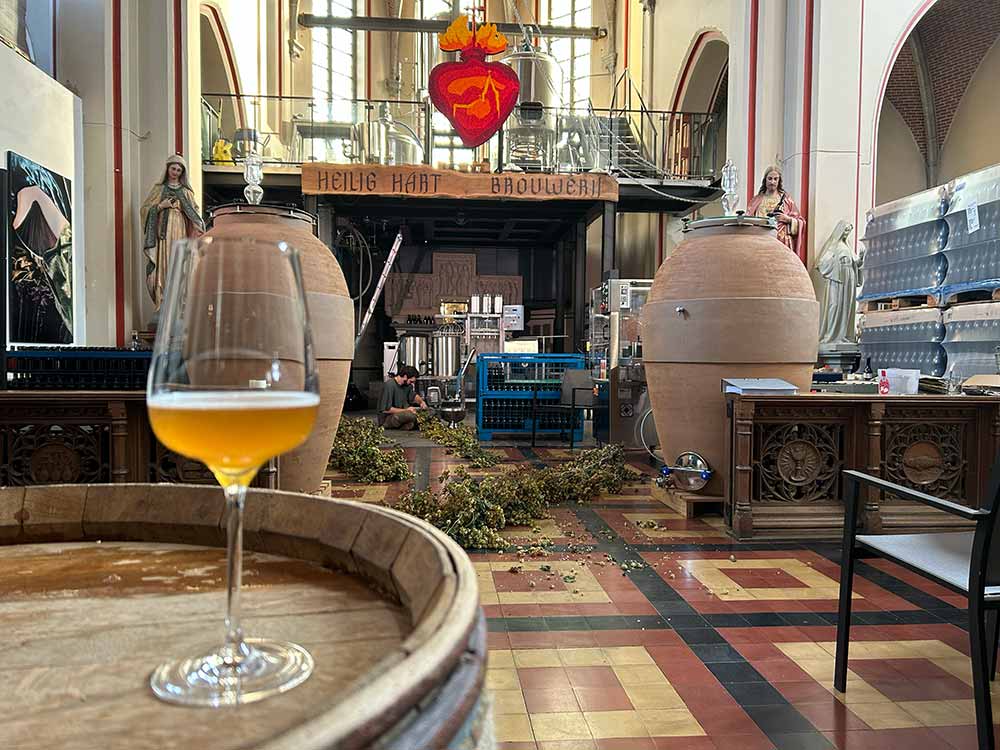
Photography courtesy of Grace Weitz | Hop Culture
Walk further into the fellowship, and you’ll see a funny sight. A litany of hops litter the floor. Dusselier’s son Viktor, picking them off one by one below what can only be described as a revelation—a blood-red heart hangs down from the ceiling, a cross rising from its aorta on wings of gold and orange.
Behind the effigy, a stainless steel brewhouse sits gleaming in the light from the clustered windows.
In 2019, Dusselier installed his three-hectolitre brewery above the church’s old altar. Although Dusselier preserved the original altar, he told us, “I believe more in my altar than the one below!”
Everything at Heilig Hart has an ordained purpose that Dusselier thought through once, twice, seven times. That’s how many drawings the former engineer made of the brewhouse plans.
Just to get it right.
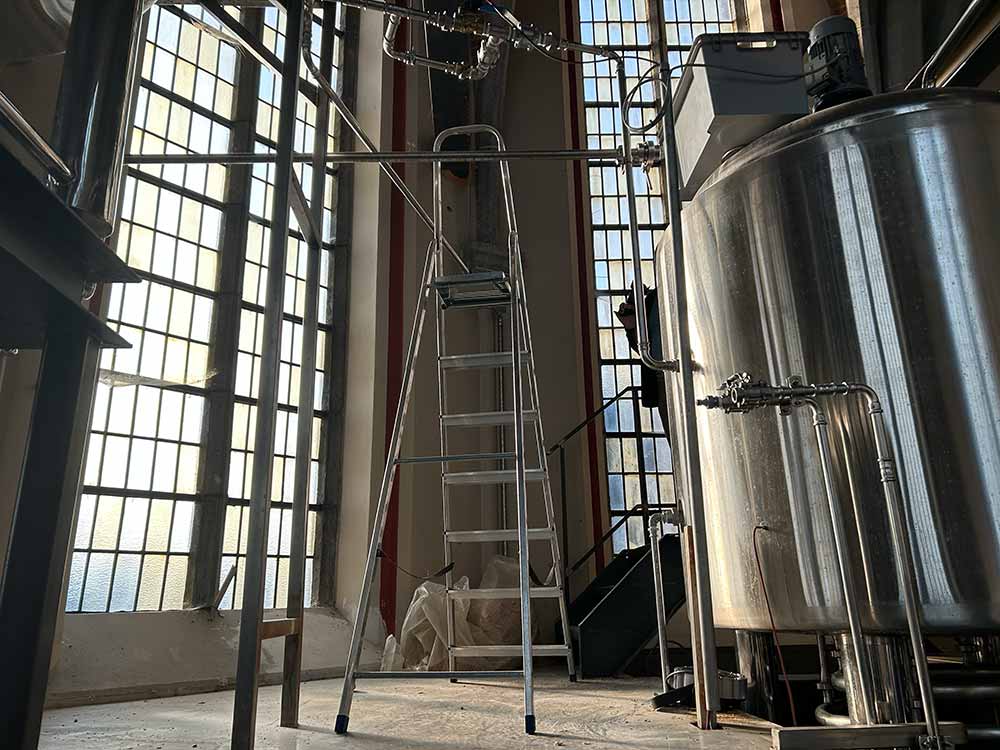
Photography courtesy of Grace Weitz | Hop Culture
This is Heilig Hart’s creed—perfection through purity.
As we walk up the twenty-five steps to Dusselier’s “altar,” he shares how he brews only with organic ingredients, a dogma that carries over from his love of natural wine.
“If you don’t see it on the label, then we didn’t add it to the beer,” he explains. (Except for their spontaneously fermented brews. “You know there’s yeast in it, but you didn’t add the yeast,” he says.)
Starting even with the water, which Dusselier says they tested 400 meters away from the church, finding it fell into their scope of mineral profile. The brewery built a well 38 meters under the church to access their own brewing water.
Around the building, Dusselier also found eight different hops growing, including Styrian Golding, Strisselspalt, and Hallertau. “We still have to harvest the vine in front,” he muses as we walk back downstairs.
Every step of brewing at Heilig Hart has been considered. But even with all these careful calculations, making beer, like writing a sermon, still needs a deft touch.
“Brewing is like soup,” Dusselier waxes. “Everyone can do it, but making a great one … is difficult.”
And sometimes, just sometimes, you have to put your beer in God’s hands.
Devotion to the Eternal Yeast
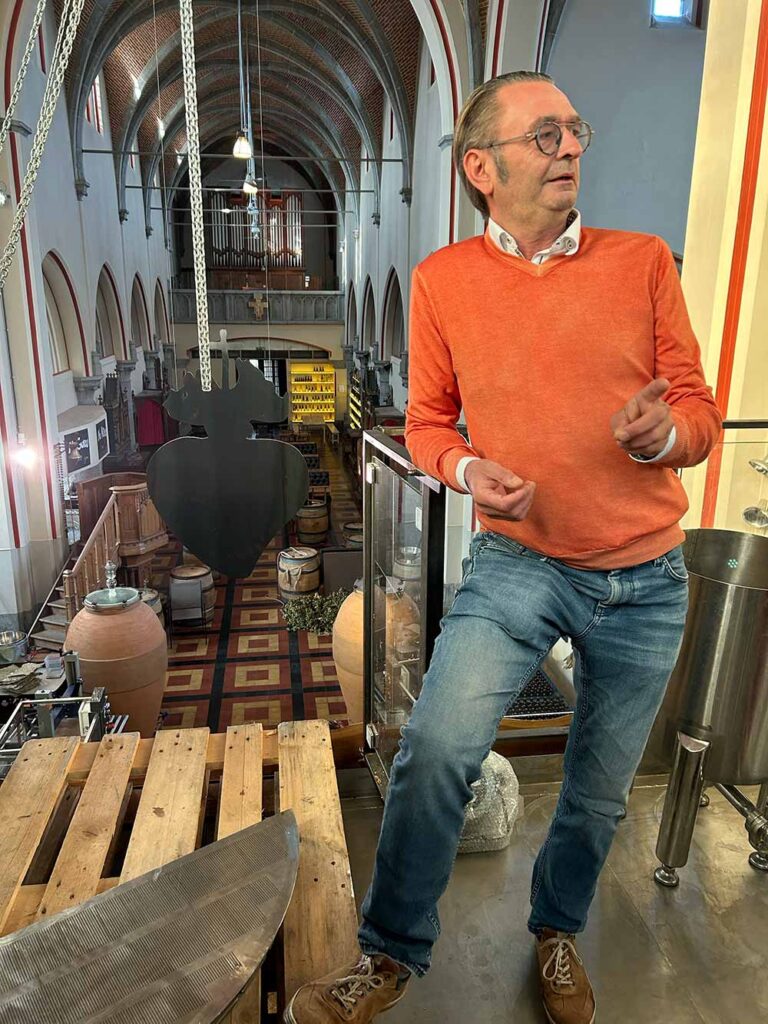
Heilig Hart Brouwerij Founder, Hans Dusselier | Photography courtesy of Grace Weitz | Hop Culture
When making those spontaneously fermented beers, Dusselier meticulously thought through that, too, He installed a coolship and punched holes in the church’s walls on either side to expose the wort to the gorgeous country air.
“One of the main reasons I bought this church was also because the Scheldt River is nearby,” he says. “You have a lot of yeast activity when it’s cold enough.”
Although, that’s why Heilig Hart calls its spon-ferm beers lambic- or gueuze-style, Dusselier says, because they’re not located in the Senne Valley.
Following the Liturgy of Lager
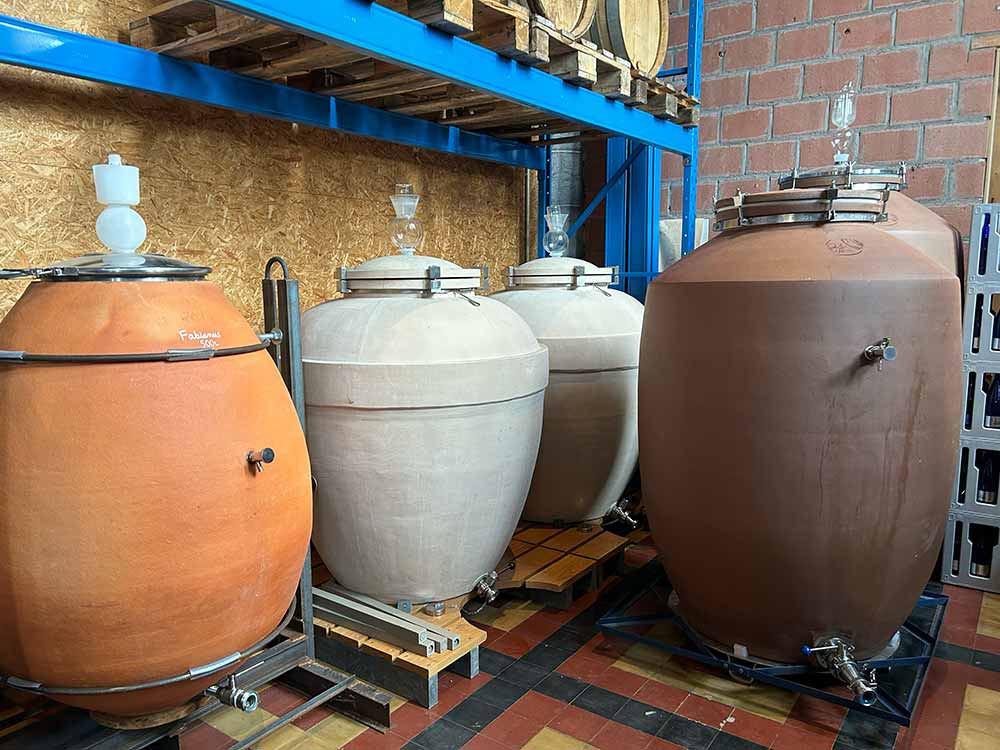
Photography courtesy of Grace Weitz | Hop Culture
Excited to show us his lagering room, Dusselier stops for a second to proudly point out his half-automated bottling machine. Heilig Hart couldn’t afford a top-of-the-line model after investing so much elsewhere. “Thank God we found a Dutch guy who was a brewer that made his own bottling machine,” says Dusselier, who bought the one currently sitting next to the church’s altar for €50,000.
From there, he ushers us back towards the front of the church, where we crowd into a room I hadn’t seen when we first walked in.
Inside, giant earthen jugs sit in every corner, lined up like bottles on a shelf.
Traditionally ancient winemakers used these amphora, cylindrical vessels made of either clay or terra cotta.
Dusselier uses them at Heilig Hart to lager beer. He believes it’s the best aging vessel because the amphora doesn’t add any additional taste to the beer like an old wine or spirits barrel.
“Especially for the whiskey beers or the beers lagered in whiskey barrels, I sometimes ask the brewery, why didn’t you make whiskey!?” says Dusselier wryly.
A bit of an amphora aficionado, Dusselier tests out ones from different countries (Italy, Spain, Catalonia, Hungary, and China, to name a few) and materials to find what works best. “To be honest, I’ve been brewing with them since 2019, and I will be happy when I retire to give some answers,” he jokes. “[But for now,] Catalonia, to me, makes the best amphoras.”
Much as we saw with the other ingenious customized parts of Heilig Hart, Dusselier’s analytical mind went to work here, too.
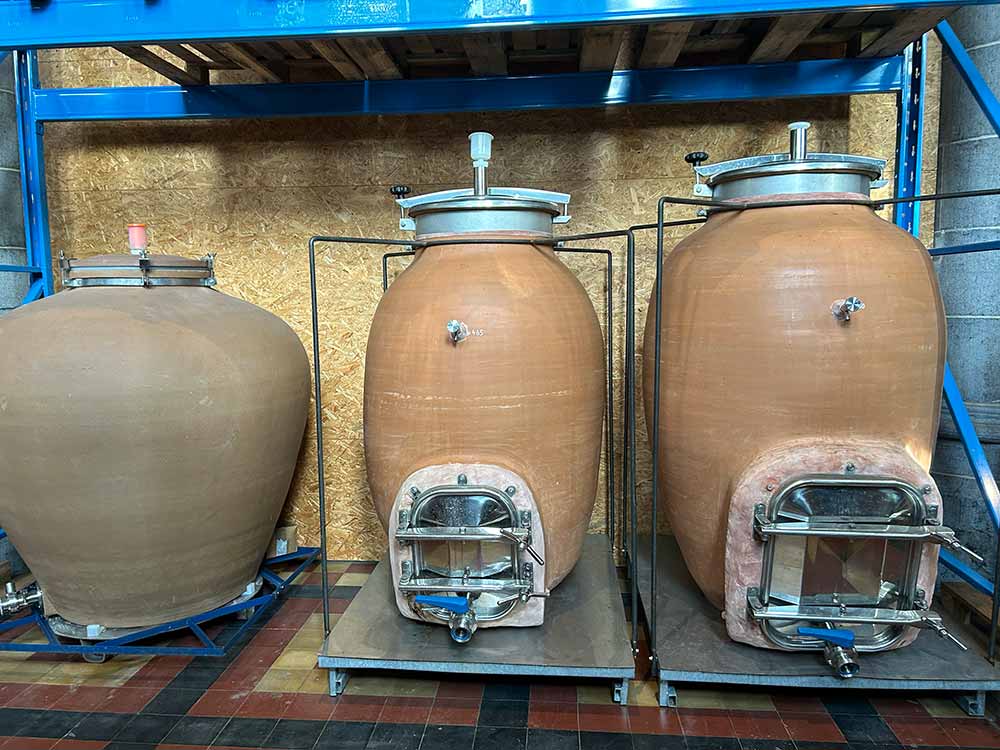
Photography courtesy of Grace Weitz | Hop Culture
He had custom amphorae built with hatches at the bottom to make them easier to clean. “Now, I see that he makes these for many wineries, as well,” Dusselier quips.
“How long does the beer spend in the [amphora]?” someone from our group asks.
Most for one to two years, Dusselier replies, “Sometimes less if we think it’s better.”
Once the beer is ready to come out, Dusselier doesn’t carbonate. “We put it in the bottle as flat beer because we think it doesn’t need CO2,” he explains.
Heilig Hart has put nine beers into the market over the last seven years. “But with the one we just bottled, that will be ten,” says Dusselier. “A lot of those beers we try to make annually but different because we don’t want to make the same beer all the time.”
As many filed back into the auditorium, making a mad hustle for the bar next to the pulpit for their “communion,” I stayed behind, listening in rapture to Dusselier preach the word of amphora a little longer.
In The Name Of Heilig Hart
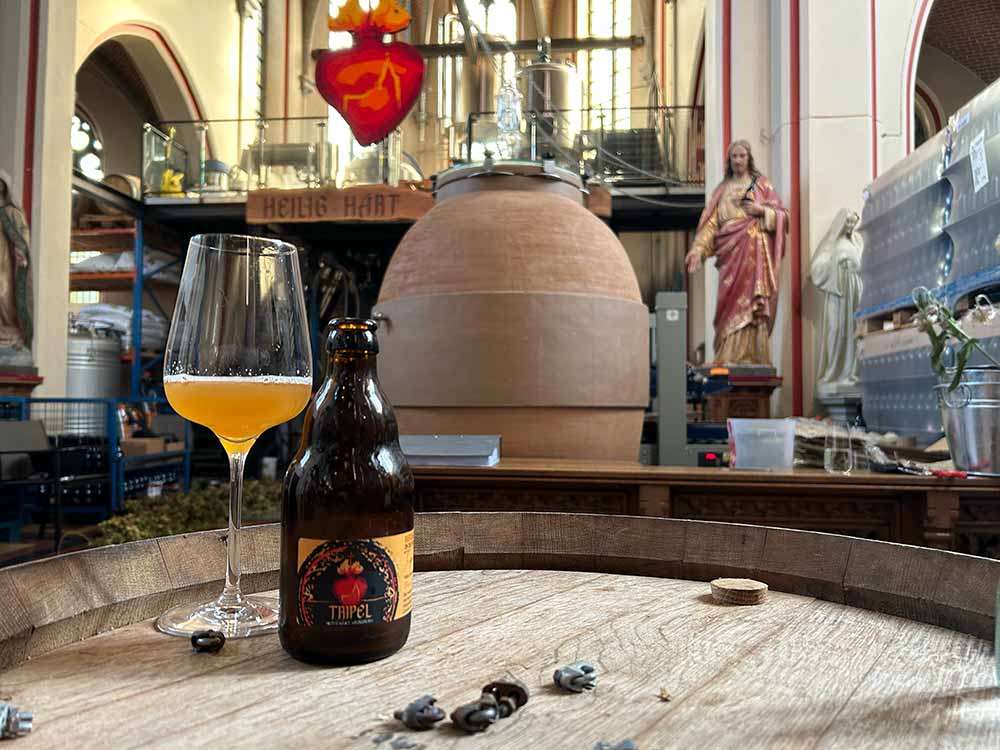
Photography courtesy of Grace Weitz | Hop Culture
Heilig Hart fittingly divides its beers into three sections—”In the Name of the Father” (representative of Belgian beer culture), “In the Name of the Son” (crazy, future, experimental beers), and “In the Name of the Holy Spirit” (spontaneously fermented beers because they need a bit of spiritual luck).
We tried the Tripel, representative of the first, Custodia, part of the second, and Epiclese, in the third.
In the Name of the Father: Tripel
Heilig Hart’s ode to traditional tripel and a part of the “In the Name of the Father” series, the Tripel wasn’t originally in Dusselier’s meticulous plans.
“I told you earlier when I bought the church nobody knew except my wife, but that was a little lie,” confesses Dusselier, who called up one of his old brewing friends to discuss his new project. “He said to me directly, ‘Hans, you have to brew a tripel.”
“What’s the point of making tripel number 837,” Dusselier responded. But his friend told him that eighty-five to ninety-five percent of the people that set foot inside his church would ask first for a tripel or a dubbel. Because that’s Belgium.
“So now when somebody comes here and asks for a dubbel, I tell them the ‘dubbel’ doesn’t feel well in the church,” says Dusselier. “But I have a tripel!”
One made Dusselier’s way, a bit higher on the bitterness side (40 IBU). You know, just to be a little naughty.
In the Name of the Son: Custodia
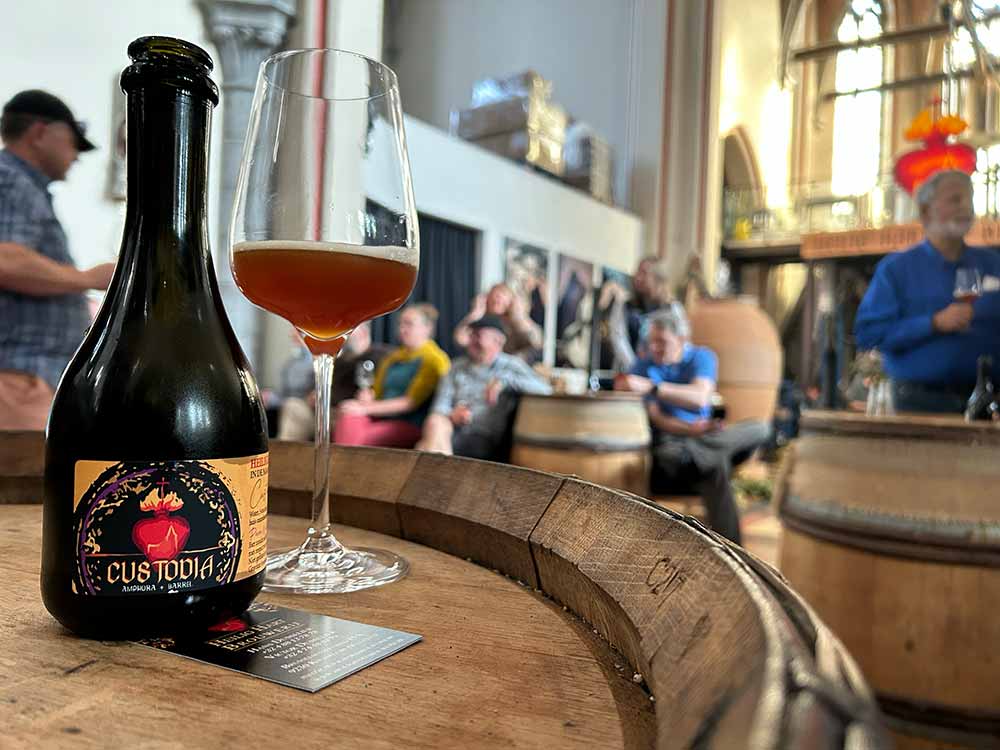
Photography courtesy of Grace Weitz | Hop Culture
Each beer was a revelation in its own right, but Custodia struck me like a burning bush in the desert.
A part of a series of Heilig Hart’s crazy experimental beers, Custodia started as an oud bruin.
But Dusselier refuses to call the beer that because “it would have been too easy just to make an oud bruin,” he says. Instead, Dusselier adds a twist, kettle-souring the brown base with 1,000 litres of yogurt. “We make it difficult for ourselves because we wait until the Lactobacillus have multiplied themselves,” says Dusselier, noting that can take anywhere from twenty-four to thirty-six hours. “You can imagine industrial, commercial breweries will never do this because this is a really crazy idea.”
After boiling, he fermented Custodia with a family sourdough culture. “My wife makes bread with it,” he says. “And I make beer with it.”
The first batch went into foeders for sixteen months and the second in amphoras for four months.
The version we tried blended the two.
Pouring a beautifully murky amber, Custodia hit me with sparkling notes of beet and earth, intertwining with fresh-picked strawberry and plump cherry.
In the Name of the Holy Spirit: Epiclese
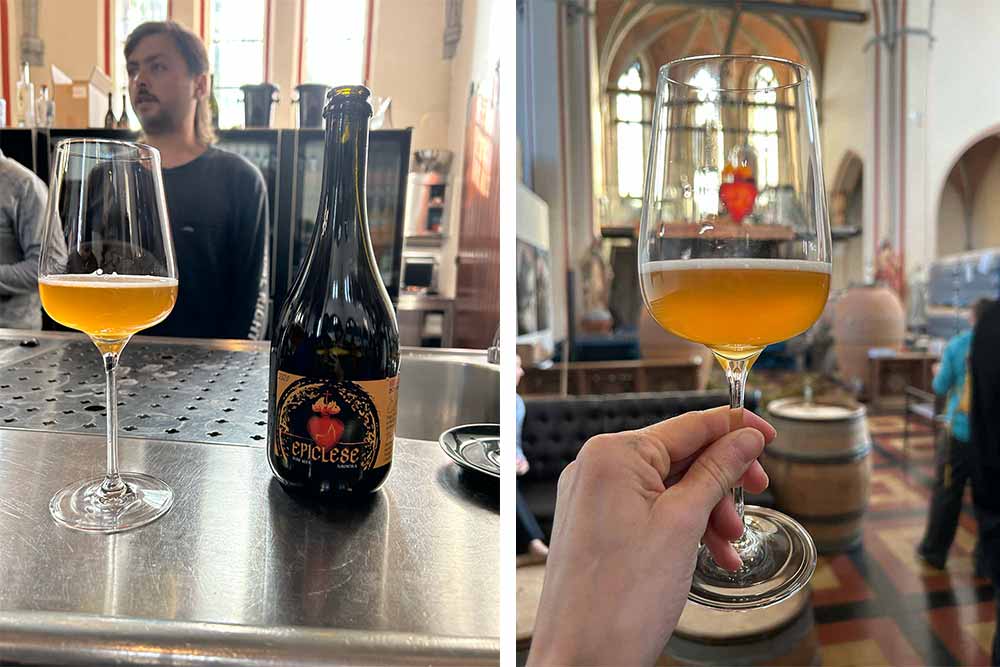
Photography courtesy of Grace Weitz | Hop Culture
Most loved Epiclese, the first beer Heilig Hart ever made in 2019 and also sold out. So we drank the 2020 version.
For this wild ale, Dusselier goes to a natural winery in Alsace, returning with fermenting grape juice.
They macerate a blend of riesling, chardonnay, and gewürtztraminer for two days, adding the mix to the amphora. “We brew and put the wort on top of it so that it can ferment with the yeast of the natural winemaker,” says Dusselier.
While partaking in a couple of brewing courses, Dusselier told his teachers about his idea for this beer. “They said it will not function,” says Dusselier, who let them taste the final version without telling them it was that beer. “They were like, Hans, what a crazy beer.”
Spontaneous fermentation is the key. “I think it only works … with the native yeast on the grapes,” Dusselier explains.
Spending fourteen to fifteen months in the amphora before bottling, the beer drank with the tannins of a wine, very dry with notes of green grape skin and golden raisin.
Cloudy, deep gold like an angel’s halo, the wild ale slid down as buttery as a chardonnay. I thought it an exquisite, refined, yet relaxed beer.
Like Dusselier himself.
Heilig Hart Saved our Souls
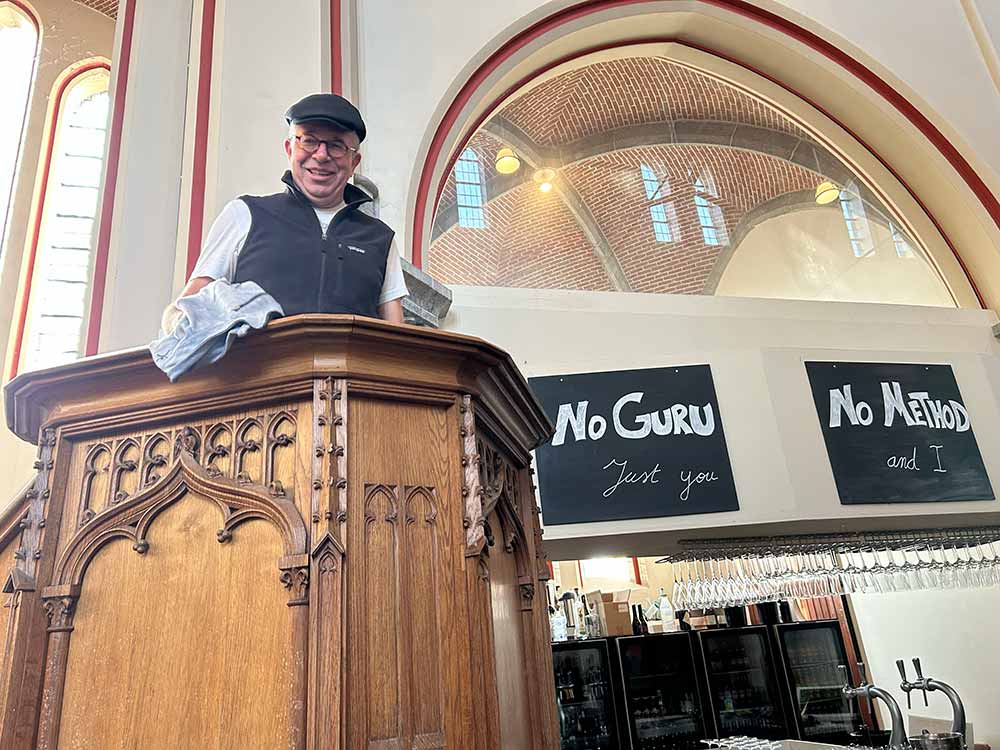
Photography courtesy of Grace Weitz | Hop Culture
After drinking Dusseliers’ beers, one might be compelled to cross themselves. Or shout from the pulpit; holy hell, I’ve never tasted anything like that before.
At Heilig Hart, beers are on another spiritual plane.
And for our part, we’re lapsed believers now devotedly along for the ride.
As we finished sipping and headed back out to the bus, I looked around again, drinking in everything about this brewery-in-a-church.
Underneath Dusselier’s altar and next to the church’s old one, Dusselier’s son continued to pick hops straight off the vine.
Someone from the group piped up with a last-minute question, “Does the organ still work?”
“Everybody asks that,” Dusselier says with a little smile. Apparently, it did, but the fire department declared the motor a hazard, so they needed to remove it.
No doubt, though, if he still could, Dusselier would be playing music from that instrument every day.
For now, though, he lets his brewing philosophy and beers sing a holy gospel.
And we basked in the glow, rapt with every word.
Amen.

